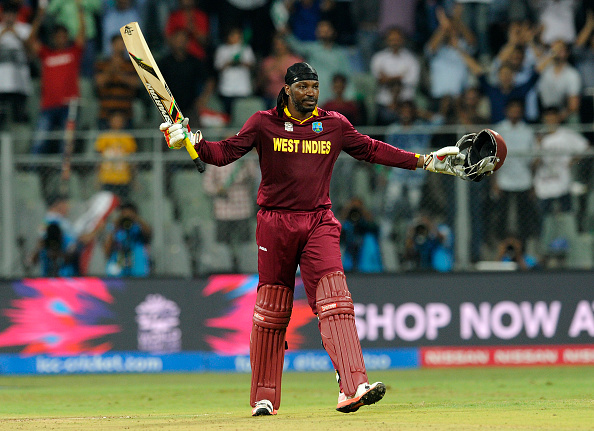West Indies coach Phil Simmons has compared Chris Gayle to legendary batsman Viv Richards in his ability to dominate bowling attacks.
Gayle smashed 100 off 47 balls on Wednesday night as West Indies beat England by six wickets in their World T2o opener. In doing so Gayle became the first ever player to score two hundreds at a T20 World Cup.
Simmons was asked after the game how Gayle compared – in terms of destructive power – with the giants of generations past.
‘To destroy an attack like that, the only person in my time that I would put him with is Sir Vivian [Richards] because Sir Vivian used to go out there and destroy attacks like that,’ Simmons said.
‘I think he is up there with Sir Viv in the way he tears apart attacks.’
Gayle is not known for his foot movement or invention of shots, but instead relies on his immense power and superb hand-eye co-ordination to bludgeon balls to the boundary. He is not the most mobile batsman and not great at running between the wickets. He deals either in boundaries or singles and rarely has the pace for a second run.
While he may come across as a lazy batsman at times, he is rather laid-back and relies on his strength and timing to hit boundaries.
‘I think it is as simple as you see it, because this is the first time I am with the T20 team since I have been back [as coach],’ said Simmons.
‘I have been sitting and talking to him to see how he works it out. It is as simple as he makes it look out there. He actually analyses as simple as he does it. He practises hard, he hits a lot of balls in the nets but he works it out; “[Adil] Rashid is my bowler for the day, I will take him down”, it is as simple as that.’
Gayle (36) has been part of the West Indies dressing room for more than a decade and a half. Simmons, who played his last international three months before Gayle made his debut, said that he didn’t have much to offer in terms of advice.
‘Bat 15 overs for me, that is all I need from you,’ he said when asked what he had told Gayle. ‘I know that once you bat 15 overs, we would be somewhere near to the target we want to be setting or chasing.’







